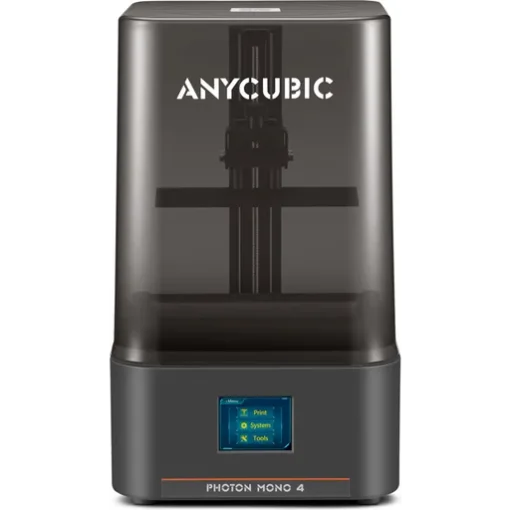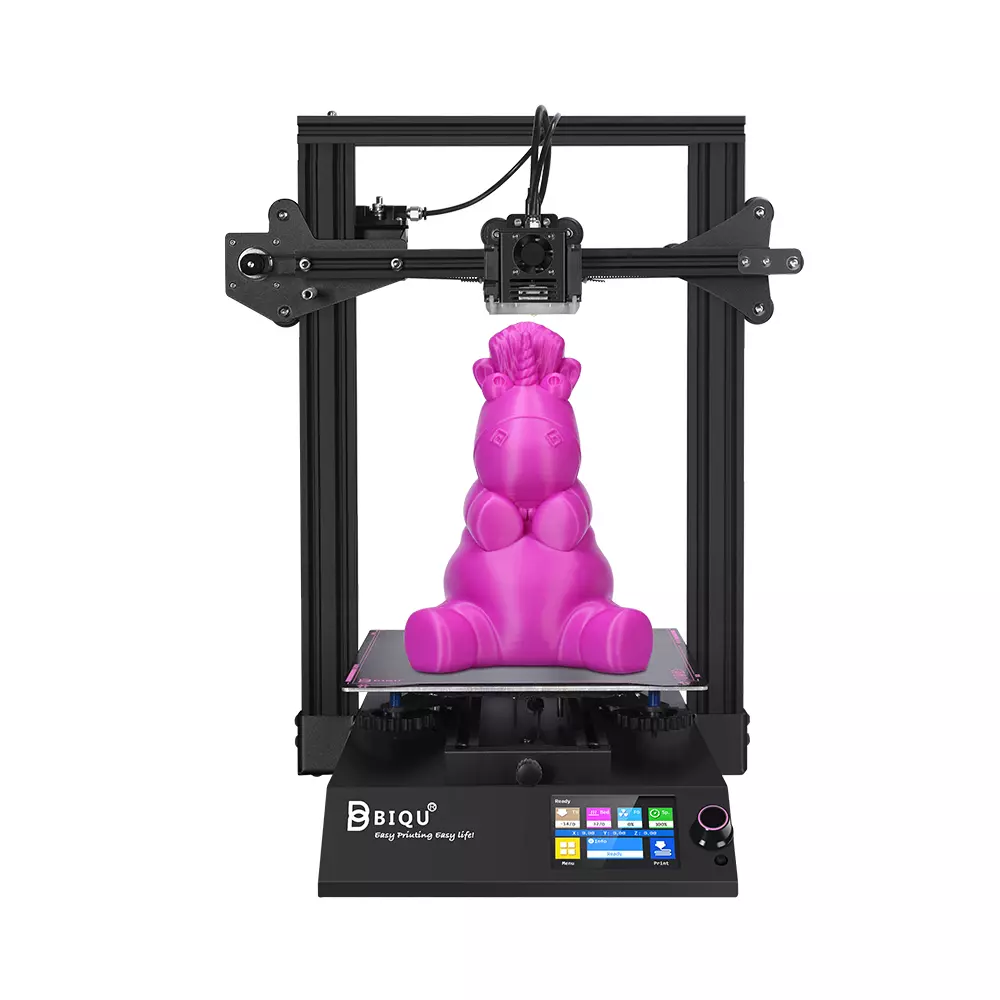Compare Photo Mono 4 vs BIQU B1
Comparison between the best 3D printers
Choose the best 3D printer at the best price. The cheapest 3D printers are here.
Buy a 3D printer here with 3D Fila.
 |
 |
|
| Model | Photo Mono 4[BUY Photo Mono 4] |
BIQU B1 |
| Printing Material | Resin | Filament |
| Buy Resin for Anycubic Photo Mono 4 | Buy Filament forBigTreeTech BIQU B1 | |
| Estimated price | $200,00 | $269,00 |
| Manufacturer | Anycubic | BigTreeTech |
| Release Year | 2024 | 2020 |
| Print Volume [mm] | 153x87x165 | 235x235x270 |
| Printer Size [mm] | 300x300x480 | 412x402x492 |
| Weight [kg] | 4 | 8,00 |
| Power Loss Recovery | NO | YES |
| Maximum Resolution [mm] | 0,01 | 0,1 |
| Processor | 32 Bits BTT SKR V 1.4 | |
| Display | Touchscreen 2.8'' | Touchscreen TFT 3,5'' |
| Power Supply | 24V / 360W | |
| Connectivity | USB | SD / USB |
| Operating systems | Windows, Mac | Windows, Mac, Linux |
| Date of registration in the system | 2024-12-13 | 2021-04-14 |
| Release date | 2024 | 2020 |
| Extra features | The Anycubic Photon Mono 4 features 10K resolution (9024x5120), ensuring precise details with pixels of 17x17um. Its laser-engraved platform 2.0 offers excellent adhesion and easy model removal. Equipped with LighTurbo matrix lighting, it provides uniform illumination, reducing layer lines and rasterization. It has a print volume of 153.4x87x165 mm, 4-point manual leveling, and a print resumption function after power outages, optimizing time and materials. | The BIQU B1 is an advanced 3D printer with a silent 32-bit BTT SKR V1.4 motherboard and ARM Cortex-M3 CPU, offering DIY interfaces (I2C, SPI, WiFi) and dual Z-axis. Its dual BTT B1 TFT35 V3.0 operating system allows real-time monitoring and multiple printing modes, including G-code visualization effects. It stands out for its BIQU SSS (Super Spring Steel), ensuring easy model adhesion and simplified removal, with the possibility of using it on both sides. It includes a filament sensor, automatically pausing printing in case of filament breakage. The multicolored RGB lights integrated into the hotend allow you to view the printing status even at night. Additional notes include the need for a BIQU-specific Type-C cable and extra interfaces for smart filament sensor and BL Touch. |
| Support for multiple colors and materials (AMS and CFS) | NO | NO |
Notes * |
||
| Cost-benefit | 8 / 10 | 7 / 10 |
| Hardware | 6.3 / 10 | 2 / 10 |
| Tela | . | . |
| Print volume | 3 / 10 | 3 / 10 |
| Performance | 9 / 10 | 1 / 10 |
| [BUY Photo Mono 4] |
Conclusion |
| ### Conclusion When comparing the Anycubic Photo Mono 4 and the BIQU B1, several factors stand out, influencing the decision-making process. The **Anycubic Photo Mono 4** is a relatively new entrant, offering a superior maximum resolution and high precision thanks to its advanced 10K resolution. This makes it an excellent choice for users who prioritize intricate detail in their prints. It also features significant advancements in print quality and adhesion, alongside a compact design that aids in portability. Furthermore, its lightweight nature and efficient power recovery capabilities make it ideal for those who may experience power outages. On the other hand, the **BIQU B1**, although older, offers a larger print volume and increased robustness. Its dual Z-axis design contributes to stability during printing, while the integration of advanced features like a filament sensor and real-time monitoring adds convenience for users engaged in longer printing tasks. However, it falls short in resolution and overall print performance compared to the Photo Mono 4. In terms of value, the Photo Mono 4 provides a more favorable cost-benefit ratio, particularly for those focused on high-quality resin prints. While the BIQU B1 has its own merits, particularly regarding print size and operational features, it may not appeal to those with an emphasis on detail and precision. Ultimately, the choice between the two depends on individual priorities: for intricate, high-quality printing, the Anycubic Photo Mono 4 emerges as the better option, whereas the BIQU B1 offers advantages in functionality and larger print areas, appealing to users looking for versatility. |

